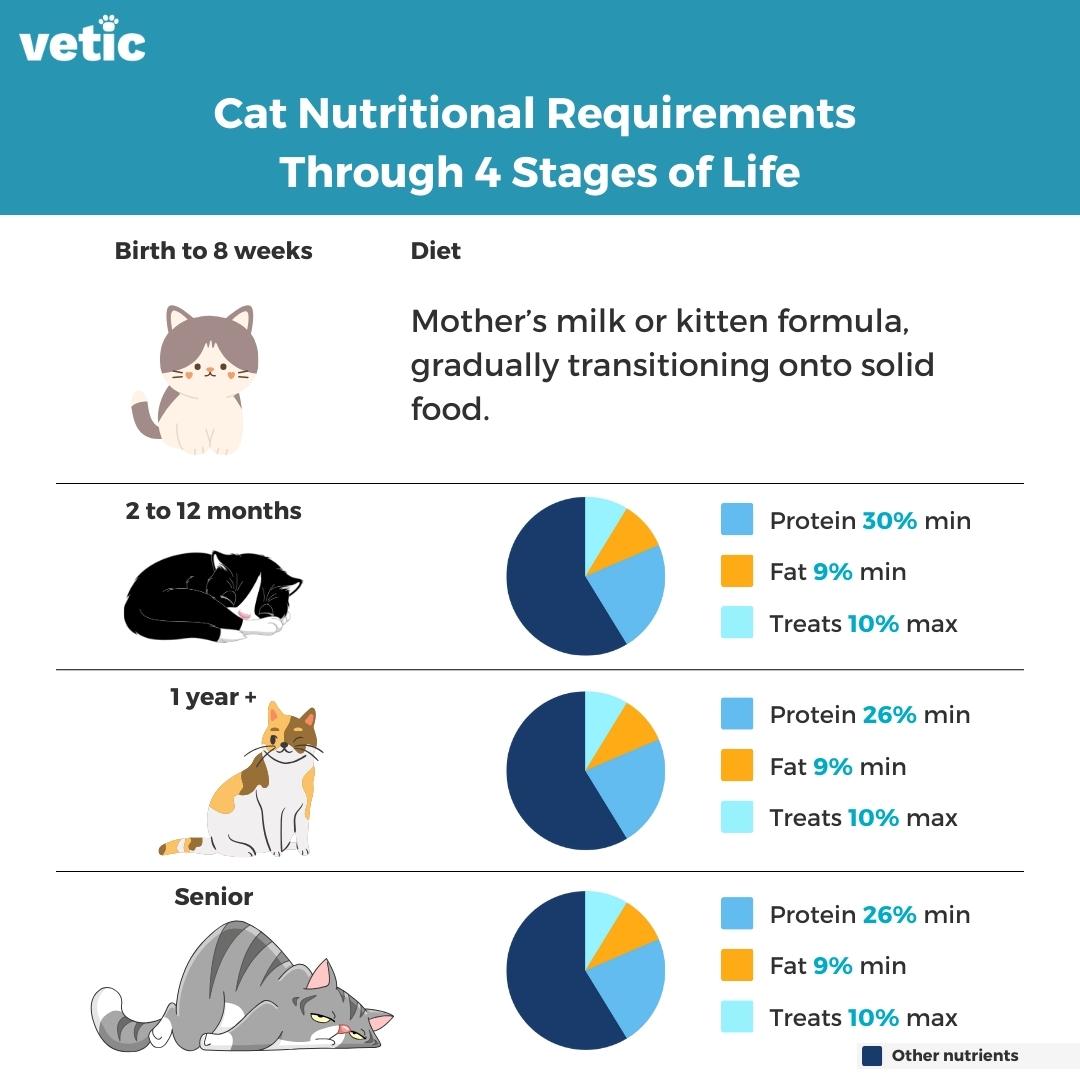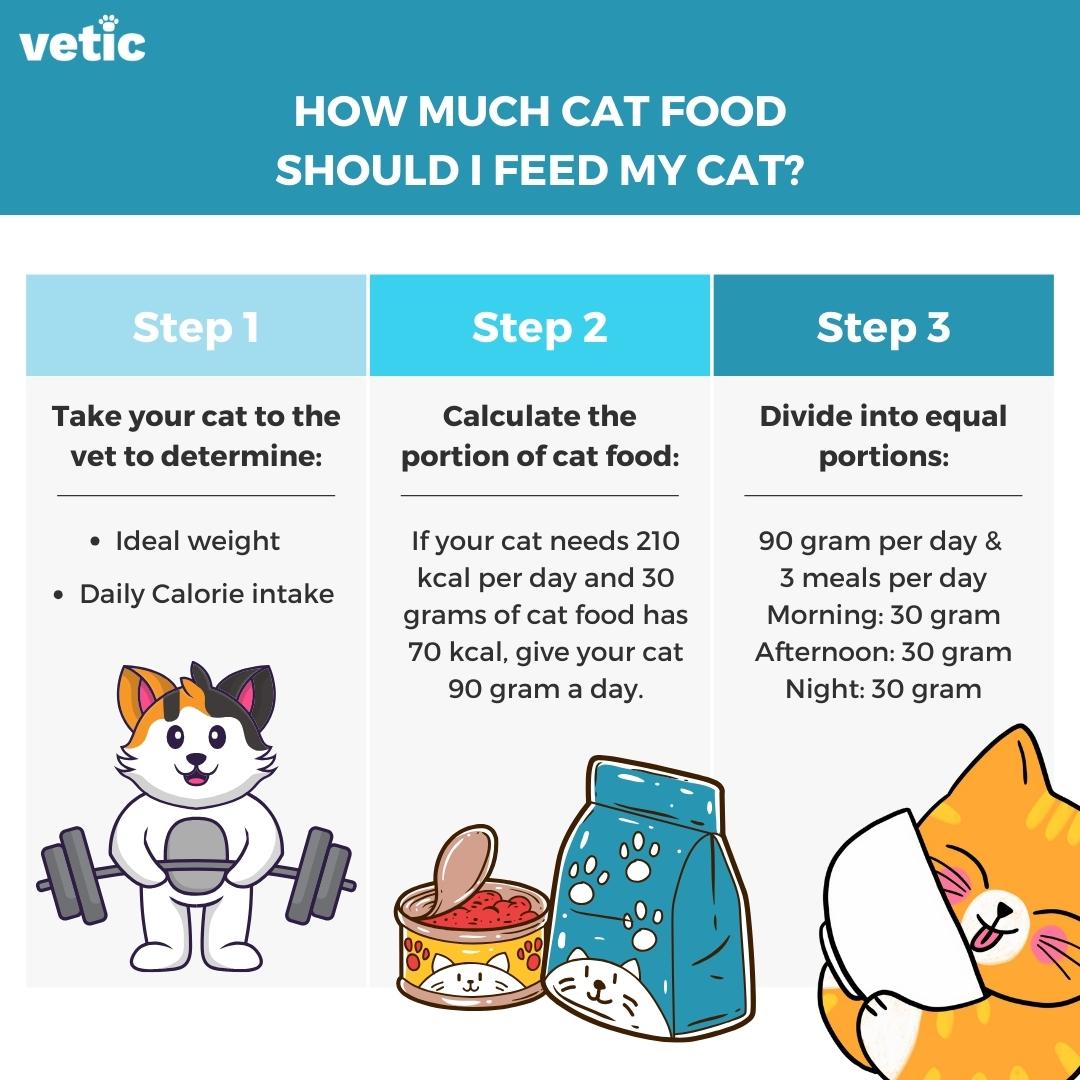Ideally, any food that meets the complete nutritional requirements of a cat can be called cat food.
In nature, it would mean prey like birds, small reptiles, small rodents and other animals.
Cats are obligate carnivores and amazing predators. They require a very high level of proteins and they derive all the carbohydrates from their prey as well.
Today, indoor cats and outdoor cats in urban areas do not have the opportunity to hunt. So, we, the “owners” (as some deluded humans like to call themselves) provide our cats with commercial cat food.
Now, this commercial cat food can be dry or wet. A complete food for any cat should have all the nutrients an adult feline needs to maintain a healthy weight and all metabolic functions.
If you are a new cat parent, talk to a cat specialist or cat veterinarian near you to chalk out the perfect diet for your kitty.
What essential nutrients should cat food contain?

Any commercial cat food should contain a huge variety of ingredients. There are 6 main categories of nutrients that cats require –
- Protein
- Fat
- Vitamin
- Minerals
- Carbohydrates
- Water
The exact percentage of these nutrients depends on your cat’s age, neutering status, breed and current weight.
Although feral cats and large cats hardly ever consume any grains, grain byproducts or vegetables, studies show that domesticated cats can easily digest these sources of carbohydrates present in their commercial dry cat food.
Types of commercial cat food
Traditionally, there are two different types of cat food – dry and wet. Prescription cat food can also come in both forms (dry and wet).
The biggest difference between dry cat food and wet cat food lay in their moisture content, nutrients and manufacturing process.
1. Moisture content
Dry food contains only around 10% of water and around 90% of dry matter.
Wet food contains around 70% water and only around 30% high protein matter. Wet food is a great additive to commercial dry cat food for cats who do not drink much water throughout the day.
2. Nutrients
Typically, dry cat food contains more carbohydrates as compared to wet food. Yet, dry commercial cat food is considered a complete food, while most of the common wet foods are labeled as complementary cat food.
Check your cat’s wet food container or pouch carefully to ensure it provides complete nutrition to cats.
The protein content of dry food can be quite similar to wet food, but that depends on the manufacturing brand.
3. Manufacturing process
Dry food contains the same nutrients as wet food. However, the manufacturing process of these foods is entirely different.
Dry food involves combining and cooking all ingredients at a very high temperature and pressure to remove all bacteria. That’s how dry food remains palatable for long hours. It makes the starch in dry food easy to digest.
On the other hand, wet food or canned food is made from fresh ingredients and the meat is combined with water, vitamins and fats. After canning, there’s a heating process that neutralises the pathogens in the food.
The Truth about Commercial Cat Food: Complementary vs. Complete Cat Food
Popular brands that offer wet cat food at budget prices label them as “complementary cat food”. These wet cat food pouches do not provide complete nutrition to your cat. They should be mixed with dry cat food to complete your cat’s nutritional needs. Complete food for cats can also come in gravy form, but they are typically labeled as “Complete Cat Food”.
Here’s a detailed look into the differences between complete food for cats and complementary cat food:
Complete Wet Cat Food
- Nutritionally Balanced: It contains all the essential nutrients (protein, fats, vitamins, minerals, etc.) your cat needs for a healthy diet.
- Can Be Fed Exclusively: You can feed your cat only complete wet food without needing to supplement it with other foods.
- Label Indicator: Look for the term “complete” on the packaging, as it guarantees it meets the nutritional standards for your cat’s daily needs.
Complementary Wet Cat Food
- Not Nutritionally Complete: It lacks one or more essential nutrients, meaning it cannot provide a balanced diet on its own.
- Meant for Supplementation: It’s designed to complement other foods, like kibble or complete wet food, to enhance your cat’s diet.
- Label Indicator: The term “complementary” on the packaging will indicate this type of food.
How to Choose the Right Wet Food for Your Cat:
If you want a standalone meal, go for complete wet cat food. If you’re adding variety or using it as a treat, complementary wet cat food is a good choice.
Have you been feeding complementary cat food to your cat? It can result in nutritional deficiencies and deficiency diseases.
How many calories does your cat need from commercial cat food?


The caloric needs of each cat is different. Two cats in the same household may require a varying number of calories. The sedentary or senior cat may require fewer calories as compared to a kitten, new mother or an indoor-outdoor cat.
To maintain a healthy weight, a cat should eat around 190 to 250 calories per day.
The exact amount of commercial cat food will depend on the composition of the food and type (specialised, dry and wet). A rule of thumb is around 40 to 45 calories per kg.
Eating more than required calories can lead to unwanted weight gain (obesity in cats). And feeding too little can lead to malnutrition or chronic weight loss.
Cat Food: Choosing the best feeding method that works for your cat
There are two ways you can feed your cat as long as you are adhering to their daily caloric needs.
1. Free feeding
Free feeding is the process when you give food to your cat once a day, but your cat eats from the same food or bowl throughout the day.
It is mainly possible with commercial dry food since it has a long shelf life.
The main pro of free feeding is that you don’t have to worry about rushing home to feed your cat. Another advantage is multiple cats can eat from the bowls whenever they please.
The obvious disadvantage includes overeating. And if you have a multi-cat household, it is impossible to tell if a cat has lost their appetite.
2. Scheduled and portion controlled feeding

If you have the option of feeding your cat multiple times throughout the day, or you are feeding them wet food only, scheduled feeding is the way to go!
After giving them their portion, wait for around 30 minutes before removing their food.
Scheduled feeding time is necessary for pets who require monitoring during their eating time. It will allow you to monitor their food intake in case your cat throws up frequently after eating, is recovering from surgery or illness, or if they need to lose weight.
The biggest disadvantage of scheduled feeding is giving food 4-5 times a day to your cat. It is challenging to do so for kittens since they need to be fed every couple of hours.
How to choose the right commercial cat food?
If your cat is under 12 months old, they should be eating kitten food. It can be either dry or wet. The quantity will depend on your kitten’s body weight and activity level.
In case your kitten (5 months or older) is neutered, they will need special food for the neutered kitten.
Older cats will require cat food formulated for adult cats, unless they have specific needs for health conditions such as obesity, fatty liver, hair balls and skin-and-coat problems.
How to give cat treats?
Include the calories in your treat within the total caloric intake of your cat.
If you are giving additional treats to your cat do keep an approximate count of the calories. And give them dry or wet food accordingly to keep the total caloric consumption the same.
The choice of cat treats should depend on the liking of your cat. Nonetheless, opt for treats that include organic and natural ingredients that are similar to a cat’s natural diet.
Does commercial cat food provide complete nutrition to cats?
Commercial cat food is designed specifically for indoor and semi-indoor cats of different ages. You will also find cat food for specific health conditions in cats.
Cat food has been designed after considerable research on the natural diet of cats, who are obligate carnivores. Therefore, whether you choose dry cat food or wet food, giving the right quantity can meet the complete nutritional need of your cat.
